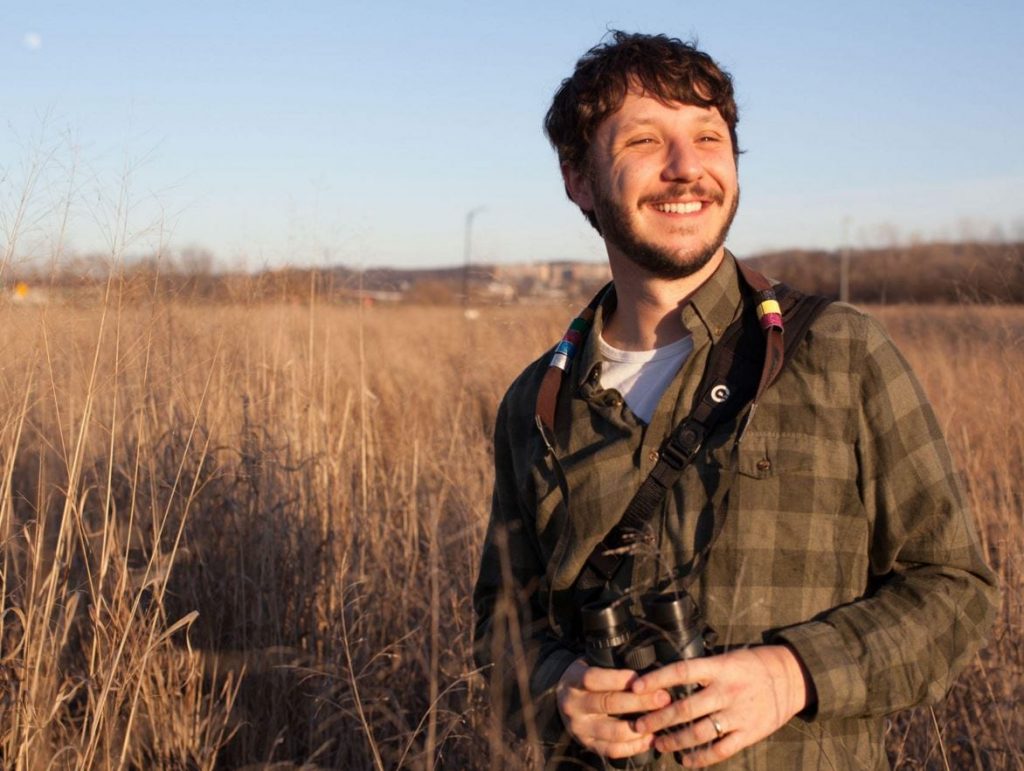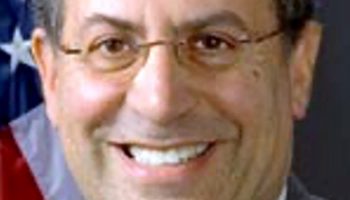
Mariia Novoselia
Staff writer
For Nicholas Lund, birder, conservationist and author, the question about his favorite birding experience is “unanswerable.”
“(Birding) is a lifelong scavenger hunt that takes you everywhere a bird could possibly live,” Lund said.
There are over 10,000 different birds in the world, he said, and while seeing them all is unrealistic, he’s striving to see as many as possible. Lund said his curiosity and affection for birds has taken him to many places across the United States, including the Alaskan tundra, the swamps of the Everglades, canyons in Arizona and the Rio Grande. Now, birding has brought him to the grounds of Chautauqua Institution.

Titled “The Birds of Our National Parks,” his talk for the Bird, Tree & Garden Club is at 12:15 p.m. today in Smith Wilkes Hall. In the Brown Bag lecture, Lund said he will discuss the connection between birds and national parks from several perspectives.
Instead of talking about different threats and conservation issues, which Lund said vary across different parks, he will focus on biodiversity.
“I want to have fun and celebrate the National Park System and the birds within it,” Lund said.
He plans to give the audience tips on where to look for birds, as some parks and sites under the umbrella of the National Park Service have a larger number of bird species than others, he said.
“Those aren’t necessarily the parks that people think of first,” Lund said, noting the famous Great Smoky Mountains or Yellowstone may not be his first choice of spots for birdwatching.
Another location-related tip that Lund will share involves the many designations that the National Park Service uses for all the landmarks overseen by the agency. There are 58 national parks, he said, but altogether there are more than 400 different sites, like national battlefields, national historic sites or national seashores. These “havens for biodiversity” have rich bird life, Lund said, yet are sometimes overlooked by birders.
Finally, Lund will talk about some “classic and iconic” bird experiences.
“When we talk about the large, famous national parks, a lot of people associate those with certain wildlife,” Lund said. “If you’re talking about bison at Yellowstone or panthers at Big Cypress, there are bird equivalents at various national parks too.”
Lund is the author of two books: The Ultimate Biography of Earth and The American Birding Association Field Guide to the Birds of Maine, both of which were published in 2022.
The American Birding Association, with which Lund had already been working on various projects, he said, was publishing a state guide series. Maine, where Lund is based, hadn’t had one “in many decades.”

“They asked me to put one together,” Lund said. “That was a real honor – being from here in Maine and birding here in Maine – to be able to figure out what species should go in the book and write about where they live and how they live.”
The birds of Maine, he said, are “pretty remarkable,” and while the state of Maine is not the largest, he said, it is very diverse in habitat.
Northern Maine, Lund said, is very forested and has “a special type of habitat that doesn’t really exist very much in the lower 48 (states), called boreal forest.” He said a lot of species, like boreal chickadees, black-backed woodpecker and spruce grouse, can only live in that kind of habitat. These birds, Lund said, are one of the reasons why people travel to Maine.
What’s also special about bird habitats in Maine is the state’s coastal islands. Remote and rocky, they serve as nesting habitats for seabird colonies, Lund said. Atlantic puffins, for example, are “a very cute and charismatic bird” that spend most of their life in the ocean, he said, but come to land in the summer to breed. Maine, Lund said, is the only state that has Atlantic puffins.
The state bird of Maine is the chickadee. Lund said he had been writing about state birds previously and inadvertently started a controversy in Maine that led to him testifying before the state legislature. A 1927 law, he said, declared chickadees as the state bird. However, chickadee is a family of birds, and there are two different types of chickadees – boreal chickadees and black-capped chickadees.
The bill for specification on what kind of chickadee is the state bird never passed but, Lund said, both are “lovely little birds” that do not migrate and stay in Maine all year round. Chickadees, he said, know the forest so well that other migratory birds join them.

“They’re social and cute, and they’re a great state bird – whether it’s the boreal or the black-capped (chickadee),” Lund said.
The state bird of New York is the eastern bluebird. These birds, he said, “bring a lot of joy to backyards in New York” and the eastern United States. To attract eastern bluebirds, Lund recommended putting dried mealworms in bird feeders and installing bluebird boxes for them to nest in.
Lund said while he grew up in a “very outdoors-oriented family,” birding was not something he did as a child. Instead, he said his family used to do fishing and hunting, which Lund found to be “fun, but boring.”
“I really wanted to explore different areas, see new things and have some excitement of being outside that sitting in a boat and reeling in and casting again didn’t give to me,” he said.
Lund said he discovered what birding was and found his love for it only when he went to college. He said he has great memories of going to Montezuma National Wildlife Refuge, which is a “really amazing migration spot.” There, he said, he saw thousands of birds in one place.
“What birding does is it really changes your perception of the landscape – from ‘a human civilization versus nature’ to ‘nature is everywhere,’ ” Lund said. “It’s experiences that can really wake you up to the scale of the natural world. I’m chasing that feeling all the time.”




